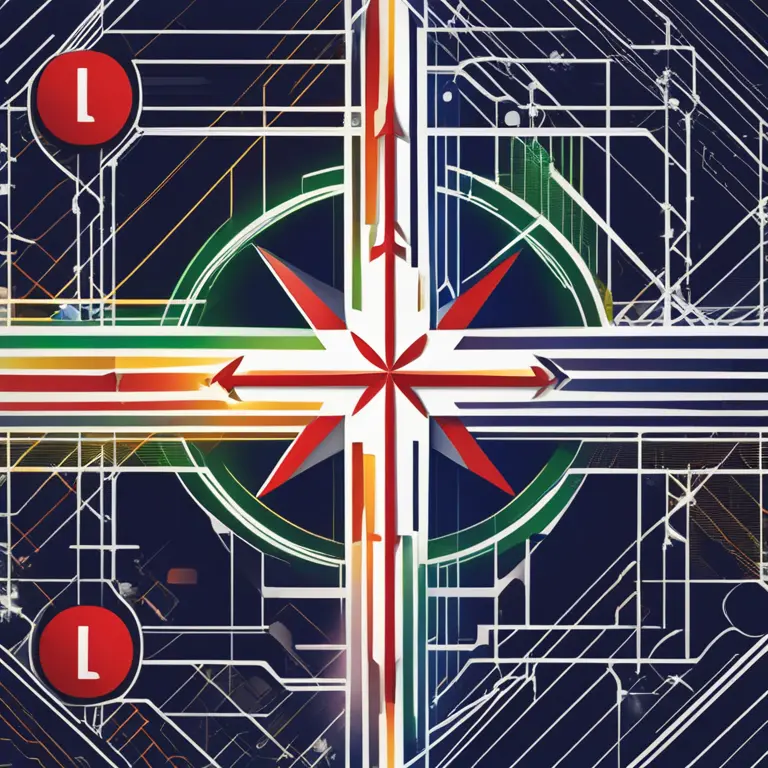
The Palmistry Life Line: Myths and Truths
Delve into the mysteries of the palmistry life line, its significance, and the misconceptions regarding its association with death.
article by Nora Pennington
Introduction to the Life Line
In the curious world of palmistry, the life line is among the most discussed and misinterpreted lines on the palm. Trace the line that arcs from the edge of the palm above the thumb, curving down toward the wrist; this is what palmists refer to as the life line. Its portrayal in pop culture has led many to believe it predicts the length of an individual's life, but this is a misunderstanding that modern palmists are eager to correct. The life line is actually thought to encompass one's vitality, major life changes, and physical endurance throughout their lifespan. Let's dispel the myths and shed light on the true meaning of this line in palmistry.

Dispelling the Death Myth
The notion that the length of the life line is directly tied to the span of one's life is perhaps the biggest misconception in the realm of palm reading. In reality, palmists interpret the line as a barometer of one's quality of life rather than a morbid death countdown. A short life line does not denote an untimely demise, just as a long line is not a guarantee of longevity. In the context of 2024 and beyond, where science has significantly advanced our understanding of life and health, the life line is viewed through a more metaphorical lens, pertaining to lifestyle and energy rather than mortality.

Reading Life Line Variations
Palmists analyze various characteristics of the life line, such as its curve, depth, and length, to interpret one's physical and emotional well-being. A deep and unbroken line could indicate a strong constitution and resilience, while breaks may suggest periods of illness or significant life changes. Wavy lines might reflect a dynamic lifestyle or restlessness. These interpretations focus on one's vitality and ability to navigate life's challenges, not the prediction of death, which remains an enduring but outdated myth in palmistry.

Impact of Other Lines and Marks
In palmistry, the life line does not stand alone in its significance. It is the interplay with other lines, like the head and heart lines, and various mounts and marks that gives a more comprehensive reading. For instance, a star mark intersecting the life line might hint at a momentous event, while a cross could represent a significant decision point. As we progress further into the century, palmists continue to emphasize the holistic interpretation of hand features, understanding that the story told by one’s palm is intricate and multi-dimensional.

Modern Palmistry Practices
As we journey through 2024 and the years to follow, the practice of palmistry evolves with new perspectives and methodologies. Contemporary palmists integrate traditional interpretations with psychological insights, offering advice on personal development rather than concrete prophecies. The life line becomes a point of discussion about an individual's stress levels, habits, and adaptability to change, turning palm reading sessions into opportunities for self-reflection and growth.
Conclusion: The Life Line as a Life Map
We must view the life line akin to a map—not dictating one's destiny, but offering a blueprint of their personal narrative. In modern palmistry, death cannot be foretold through the lines on a hand. Instead, the life line serves as a testament to one's experiences, adventures, and the paths taken. It is a tool for introspection, and with each ridge on our palms, we are reminded of the complexities of life and the power we hold in shaping our own journeys.
Published: 1/11/2024
Modified: 1/12/2024
More predictions
Come back here soon to learn more about yourself and your future


Can We Trust Palmistry?
Delving into the realm of palmistry, this article examines its credibility and place in contemporary spiritual practices.


Palmistry: The Historical Overview
Delve into the dawn of palmistry and trace its journey through the corridors of time, uncovering the roots of this ancient practice.


The Ancient Art of Vedic Palmistry
Discover the ancient art of Vedic Palmistry and its practice in the modern era, revealing the secrets held within the lines of the hand.